TL;DR
- Don’t assume you’re talking to the rational mind; a lot of decisions are made automatically.
- Carl Jung’s theory of the collective conscious helps understand even the widest demographics.
- The Milgram experiment highlights how much sway authority has over the mind.
- Inate desires are hard to overrule so playing on them can work to your brand’s advantage.
- Marketing to pre-defined behaviours means your audience are more susceptible to your brand.
Advertising often feels like screaming into a void, just hoping for the right person to come along. As trends and audience’s desires change, advertising has to adapt its approach. This evolving industry is expanding so rapidly that we now see over 5,000 ads each day.
One constant through it all is how people think. Behavioural marketing is something that once you understand, you can apply to any product, service or audience. So understanding it is worth your time.
The best way to see behavioural marketing’s value is to see it in action; a good example of advertising that has worked hard to tap into people’s behaviours is cigarette advertising.
Moving from adverts that promoted smoking with doctor’s testimonials to those warning of cancer, tobacco advertisers have had to adjust their approach as new laws and Public Health guidelines have emerged.
With huge barriers to overcome at every stage, they provide great insights into how understanding how people think can be the key to a successful campaign. Let’s unpick some of the methods used, the theory behind it and how you can adopt the same processes into your branding.
Establishing authority
Early cigarette adverts are comical today. This ad for Camels features testimonials from a doctor to explain why Camel cigarettes are great, which seems ludicrous now.
But there’s a lot to be learnt from the way they built trust with their audience.
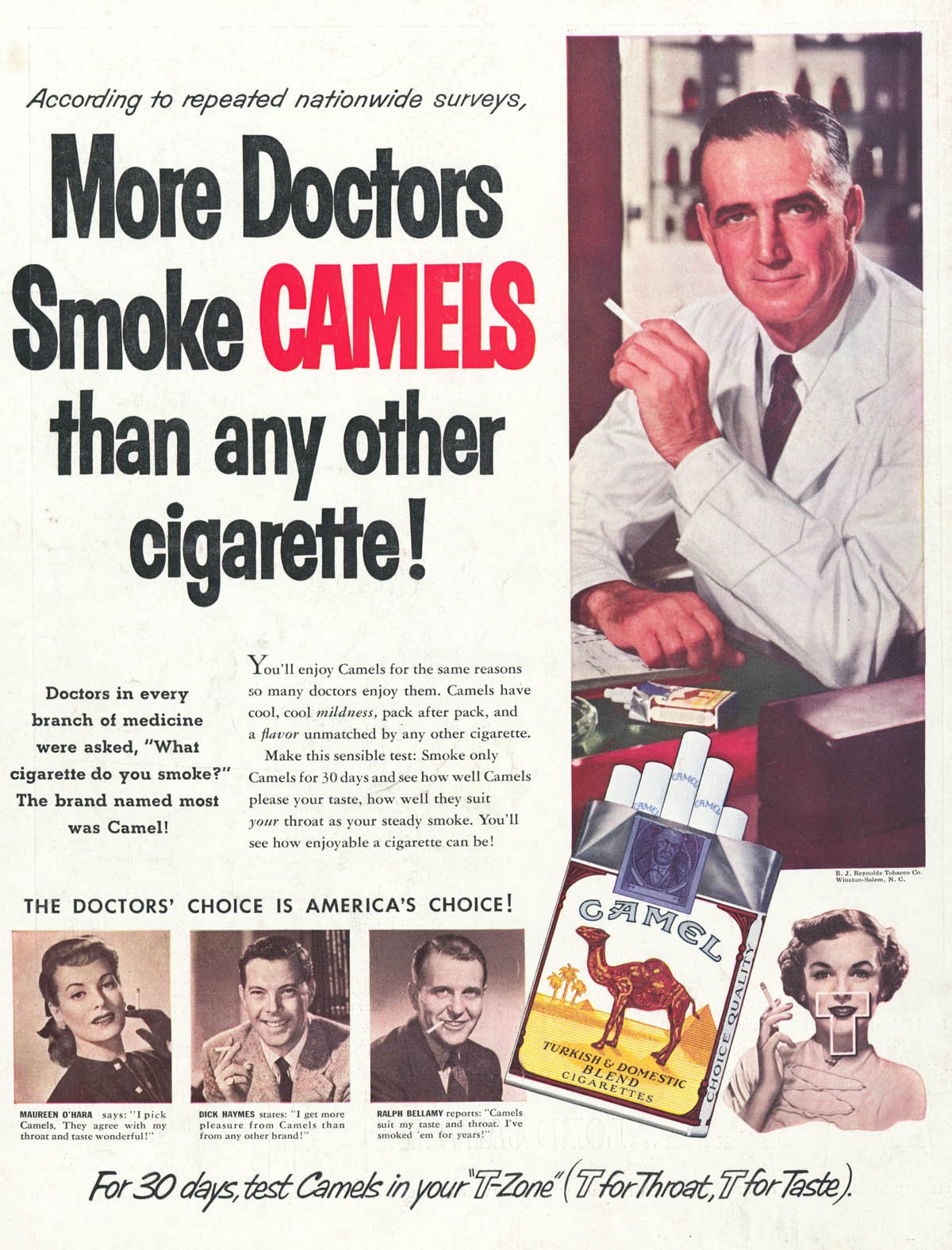
This ad cleverly combines the trust of not just one testimonial, but three, with an authority figure. All of these elements, enforced by the headline statement “more doctors smoke camels than any other cigarette” work to convince you that this isn’t an ad, but rather an article. It’s not trying to convince you that something is true, it’s saying it already is.
Taking a strong stance often pays off. All too often marketing these days sits on the fence as to avoid rocking the boat.
But you won’t be trusted for what you stand for if you never say it.
Robert Cialdini’s book, Influence: The Psychology Of Persuasion, dives into why authority is such a pillar of persuasion. He references the Milgram experiment which asked participants to carry out different memory tests on another person. If they got the answer wrong, the participant was instructed to give the subject an electric shock. The shocks were imaginary, and the people were actors, but the people delivering the shocks didn’t know that.
For every wrong answer, the voltage was increased, all the way up to levels labelled ‘severe’. The participants could stop the experiment at any time. But, if they asked to do so, the person in charge (dressed in a white coat) encouraged them to continue.
The results showed that 65% of participants complied all the way to the highest shock level. The key takeaway was “the extreme willingness of adults to go to almost any lengths on the command of an authority.”
It’s demonstrated that authority overrules rational thought. We can take this principle and apply it to marketing today. If you want people to believe what you’re saying, you need to earn their trust. The easiest way to do this is to include testimonials where appropriate; people put a lot of trust in other people’s opinions.
Better yet, build a relationship with your audience whereby they naturally trust you. Big brands do this very well – look at the growth of Apple. Their ‘Think different’ campaign was literally just black and white photos of famous people with their logo plonked on top. That’s it.
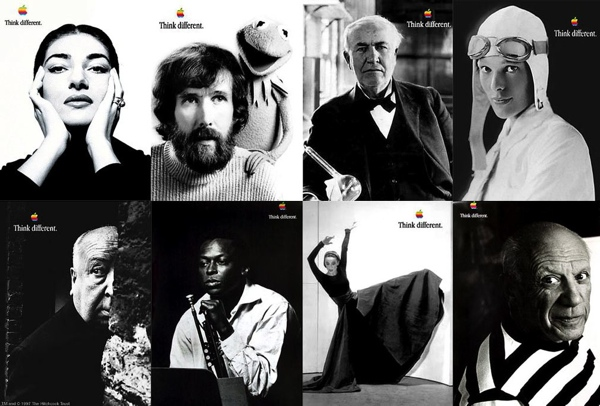
The strength of their idea was based entirely on the authority of the people in the photographs. They included famous people such as Mahatma Gandhi, Albert Einstein, and Muhammad Ali, none of which have any association with the Apple brand. But, just by putting ‘Think different’ next to their face, they were able to piggyback on their reputations.
Here, the use of pop icons is a shortcut to familiarity; the campaign takes ownership of the trust these famous figures evoke in people’s minds. So, whilst these people aren’t in white coats, they hold the same kind of power.
By creating a bond of trust, you open up a channel between you and people who will be more receptive to your ads.
Harnessing instinct
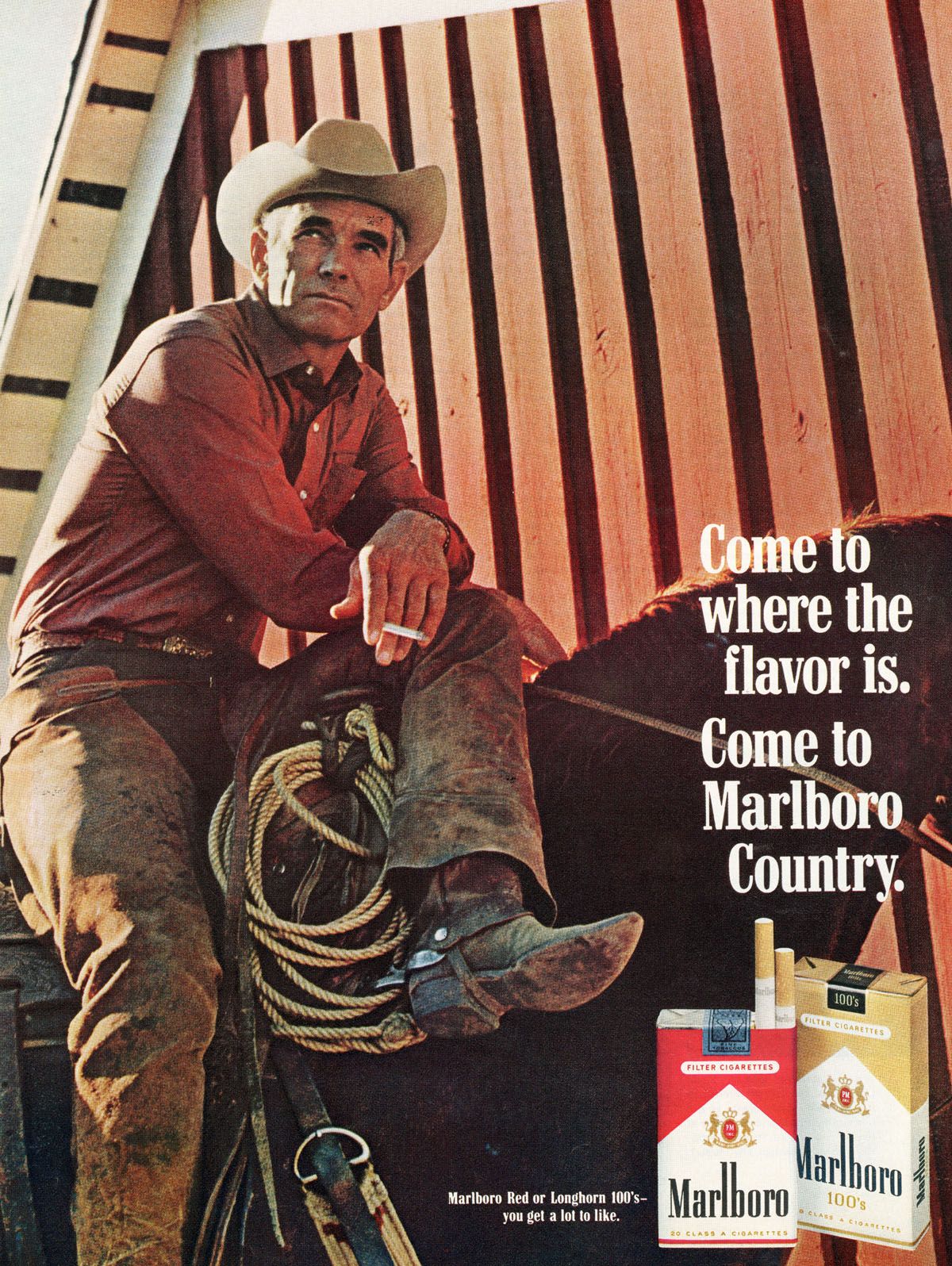
This advert is from 1970, but the campaign ran in the US from 1954 to 1999. At this point, all cigarette billboard advertisements were replaced with anti-smoking ads.
Early Marlboro ads faced one main problem: filtered cigarettes were seen as very feminine.
To popularise them amongst men, the campaign was built around the theme of labour: men on horses, working outdoors, surrounded by ropes, cars, tools etc. By showing the audience who’s using their cigarettes (assumed to be true as they must know their own brand) the brain subconsciously goes “well I want to be like that”.
It might sound like too much of a leap. Surely we don’t think we’d become like the person in an ad just because you use the same brand?
Well, ads today prove this still is and always has been, true. Take a look at Chanel’s print ad. Perfume is notoriously difficult to sell because how do you sell a scent? The audience can’t smell it. They’re likely to struggle to imagine it even if you use flowery, descriptive language. No, you sell perfume through making people want to be the person in the ad.
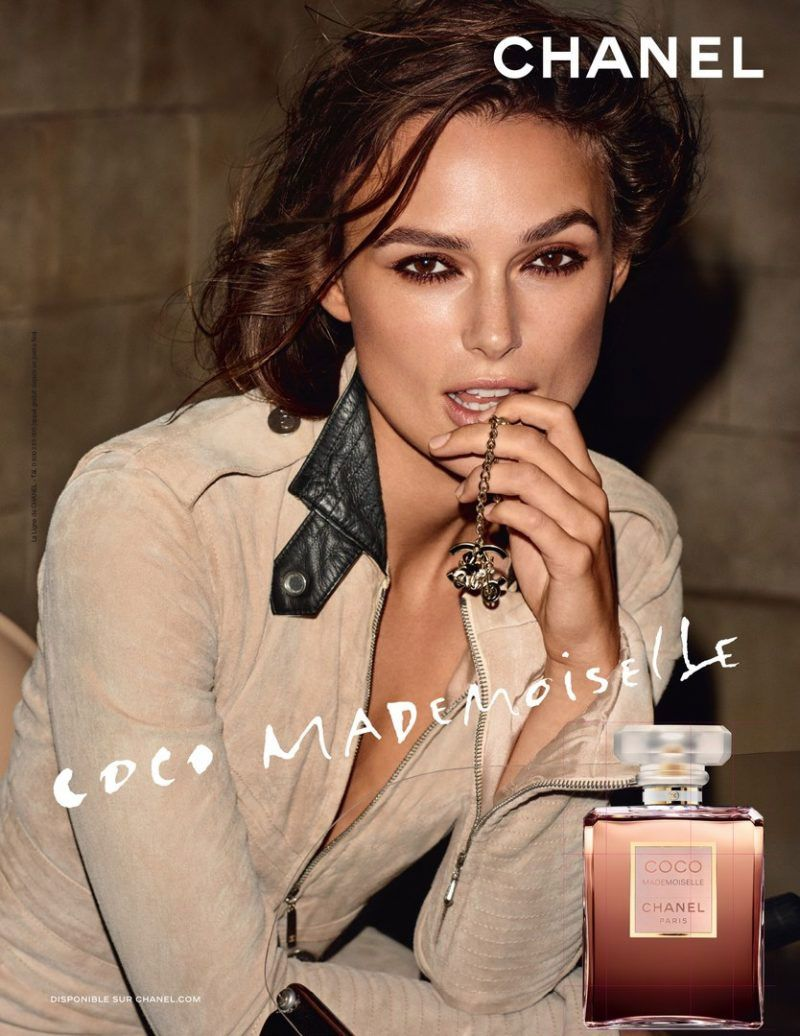
Companies in every industry pour money into celebrities, influencers and models to sell their products. So why does it work?
Let’s unpick the image the Marlboro man portrays. The use of the Outlaw figure promotes someone who is strongly independent, masculine, determined, radical and disruptive – not your average man.
The ad itself works hard to invite you to join the ‘Outlaw club’ as such. The single line of “Come to Marlboro Country” creates a world in which you’re invited. The imperative word “come” pushes you away from consideration into doing.
All these factors are at play at one time and emulate what smoking is to a lot of people: an escape.
But why does the cowboy figure appeal to so many different types of men?
Psychoanalyst Carl Jung developed a theory based on a “collective conscious” which ties us all together and is identical in all individuals.
By understanding the collective conscious, you can speak to any demographic.
Jung’s work features something called archetypes; these are universal myths which live within the unconscious mind.
You come programmed with them already in your brain, but you’re not aware. Basically, you can think of them as precursors to conscious thought or the psychic counterpart of instinct.
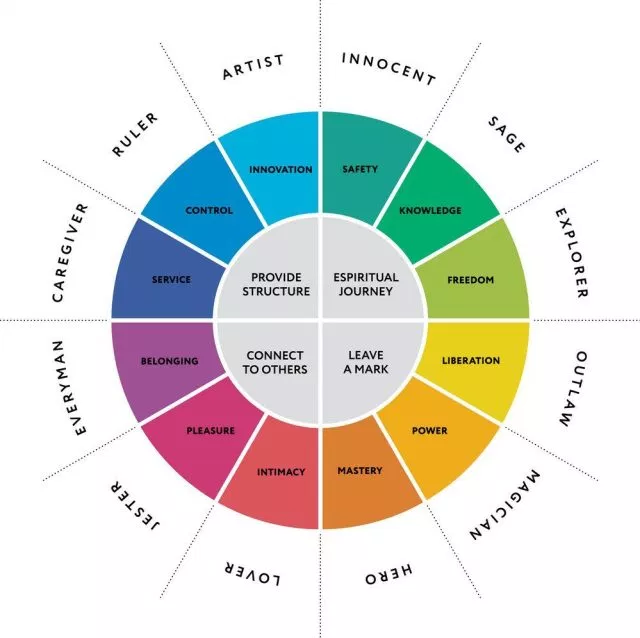
Archetypes are broken down into 12 categories. Examples include:
- Hero
- Lover
- Caregiver
- Everyman
- Explorer
They all represent different types of people, mindsets and desires.
This chart highlights which archetype correlates to which behaviour and which principal human desire. It’s helpful because it simplifies human desires and gives you insight into how to align your brand with an archetypal figure that people will instinctively connect with.
In the case of the Marlboro ad, the Outlaw archetype represents liberation and a desire to leave a mark on the world. Marlboro knows the type of consumer they want to target, so have worked backwards to associate themselves with an existing archetype. The benefits of this are that they tap into the existing subconscious aspirations of an audience, and shortcut to achieving a connection with them.
If you’re unsure which archetypes best fit your brand, then use your data to dig deeper into your customer personas. You can use this understanding of your audience’s psychology and incorporate it into your brand storytelling.
By tapping into pre-existing thoughts, you’re already halfway into your audience’s minds.
Playing on emotion with marketing and consumer behaviour
How do you make someone care about what you’re saying? Get their emotions involved.
Daniel Kahneman’s Thinking Fast and Slow provides a contemporary model of the psyche. Kahneman divides things into two different modes of thought:
- System 1 which is fast, automatic and emotion-driven. Problem is, it’s error-prone.
- System 2 is slower and conscious, and so more reliable, but requires a lot more effort.
It takes a lot for System 2 to become engaged; anything that can be dealt with by System 1 will be. It’s why you can get from your house to work and not even remember driving the car.
Most marketers would think to target System 2; after all, they want people to put deliberate thought into what they’re saying. But decisions aren’t always made rationally.
The experiment titled ‘The Linda Problem’ proves it. When asked ‘is it more probable that Linda is a bank teller or a bank teller and feminist?’ System 1 shortcuts the problem to ‘is Linda a feminist?’
This method of substitution creates an easier question to answer. But, the problem with this is that it means that, more often than not, the question is answered incorrectly; there is a higher chance of Linda just being a bank teller than both a bank teller and a feminist (since both probabilities are independent.)
The key takeaway from this is that System 1 makes mistakes. System 2 is supposed to check System 1’s decisions, but it’s lazy. So by assuming all decisions are rational, you’re missing a trick.
A good example of an ad that rides purely on appealing to System 1 is Cadbury’s 2007 Dairy Milk ad – you know the one. Phil Collins. Gorilla. Drums.
The reason this works so well, even though it has absolutely nothing to with the product or brand, is that it makes people feel good. Which they’ve then linked to how chocolate makes you feel. It’s all about emotion.
By conveying one simple message which appeals primarily to the audience’s emotions, Cadbury’s message slips into the psyche’s automatic system. Before the conscious mind realises, emotion makes people look favourably on the brand. So, however they’ve done it, they’re in people’s minds.
The art of subtlety
As the research into the effects of tobacco accelerated, the guidelines on cigarette advertising became stricter. Marketers had to work harder. For starters, they now had to display bold warnings about the damage of smoking under anything they showed.
Then, in 1986, they were banned from even showing people smoking. So how do you sell a product when you’re so restricted? Psychology.
This Silk Cut print ad from Saatchi and Saatchi is of a piece of silk with a cut in it. It shows the limitations of what the brand could show, but how it uses established connotations to get around limits.
Take the colour of the silk: the purple feels very royal and helps to establish the cigarettes as a luxury brand. Because the ad doesn’t have much to work with, it milks every symbolic meaning it can out of every aspect.
The subtlety of the ad creates this sense of exclusivity – it’s not immediately obvious what the ad is for, but fans of the brand will find it instantly recognisable. The limitations of advertising make Silk Cut feel like a secret club which you have to be invited into.
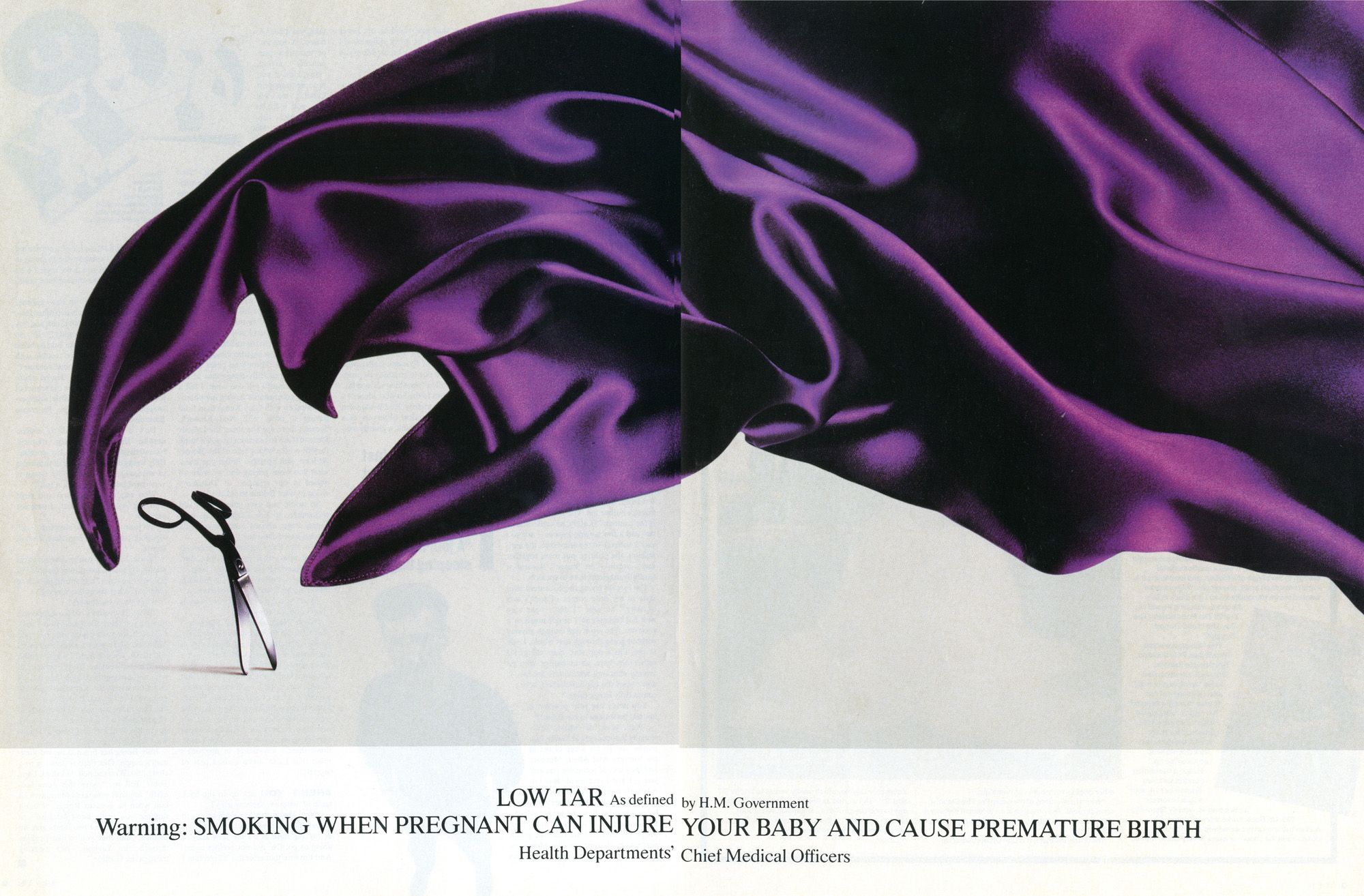
Making people listen
Looking into the behaviours of your customers will help you determine the reasons for what motivates them to act.
Finding the right combination of authority, emotion and subtlety that appeals to their instinct will not only help your brand stick in their mind but create a sense of familiarity that keeps them coming back.
Remember: you have to get through people’s fast, automatic System 1 before they’ll listen to what you’re saying. Don’t assume you’re talking to someone making rational decisions as most are made on instinct and emotion. And laziness. If people can discount what you’re saying to make less work for themselves, they will do. It’s up to you to understand how the human mind works and slip beneath its defences.




